From sundials to track the sun’s movements, to candles that burn at a very particular rate, people throughout history have always been finding unique and interesting ways to track time.
With the advent of the first mechanical movement in the 1200s, the history leading to the first wristwatch is just as important as the wristwatch itself.
The very first mechanical watches

Salisbury Cathedral, England (photo: Salisbury Cathedral)
Salisbury Cathedral in England was the first place to have a mechanical device to track time in 1275. The church was often the place of invention when it came to tracking time, as their lives revolved around prayer and song at intervals throughout the day. This mechanical timekeeper didn’t have any dial or face as we would recognize it today, but was a simple tracker of minutes.
In the 13- and 1400s, there weren’t actual watchmakers. Clocks or timekeepers were part of the art of the blacksmith. Bells would chime the minutes or hours to be heard rather than read off a dial. The first pocket watch wasn’t referenced until 1462 and it was called a pocket clock.
<>
From pocket watches to wristwatches
Pocket watches
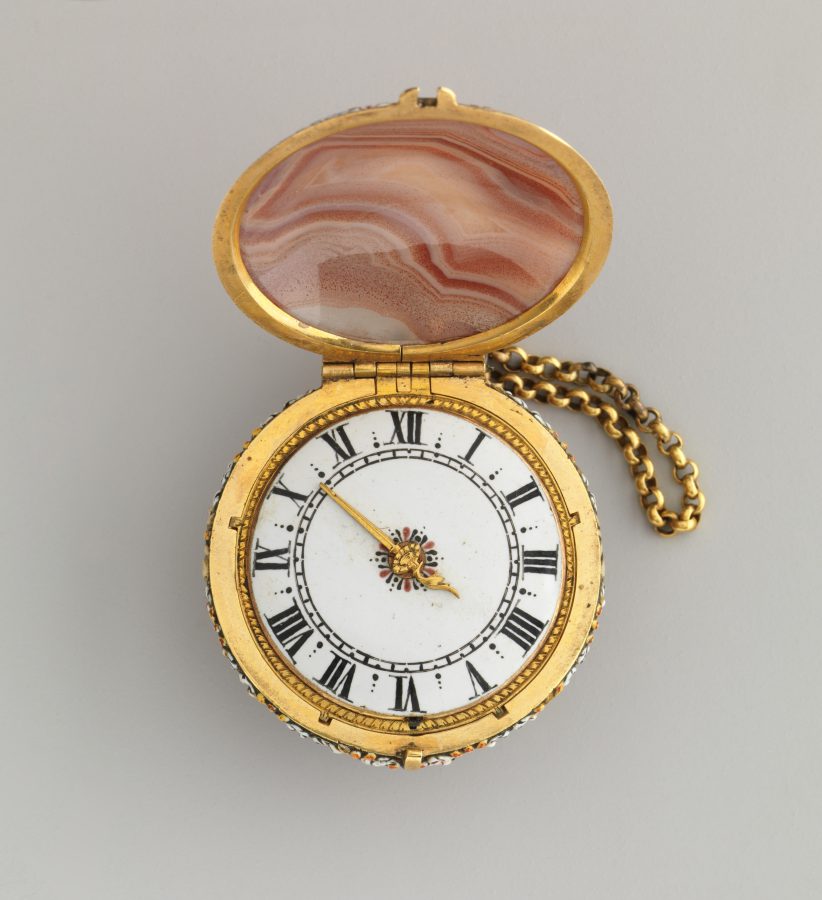
A Swiss pocket watch, circa 1655-60 (photo: The Met)
By the mid-1500s the Swiss watch industry was born, almost under duress. Calvinists banned the wearing of any jewelry, so to save the brass, bronze, and silver industry, jewelers learned to make watches, and shortly the wearing of a pocket watch was an integral part of a man’s wardrobe.
The first iterations only showed the hour until the minute hand was added in 1680, and they weren’t really pocket watches, but rather something they’d wear on a chain around their necks. The pocket forms didn’t come around until the waistcoat became popular thanks to Charles II of England.
Wristwatches were simply not popular and rarely seen. It wasn’t until they rose in popularity due to women’s fashion that the wristwatch rose to fame.
Wristwatches

Queen Caroline Murat of Naples, for whom the first wristwatch was designed
(photo: Breguet)
As far as history knows, the very first wristwatch was designed for the Queen Caroline Murat of Naples in 1810 by Abraham-Louis Breguet. This led to a more modern model. At this time, while men kept their watches on a chain attached to their pocket, women were still wearing them on chains around their necks.
Patek Philippe, another popular name in luxury watches, designed a bracelet watch for the Countess Koscowicz of Hungary in 1868.
Reine de Naples
The name “Reine de Naples” means Queen of Naples. The oblong repeater for the wrist that Breguet designed for the Queen led to the development of a modern model entitled the Reine De Naples.
Cartier Santos
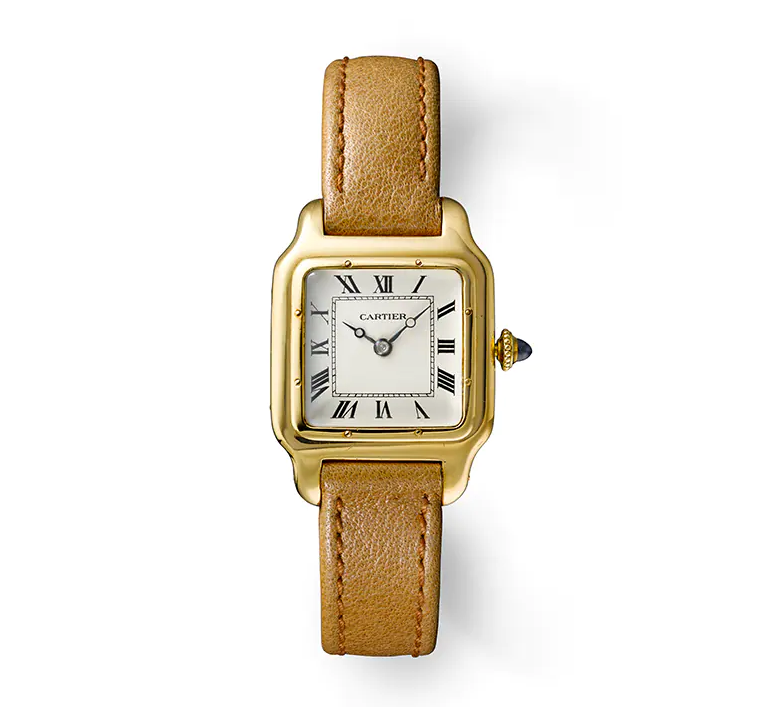
The 1912 Cartier Santos-Dumont, one of the first Santos wristwatches (photo: Cartier)
It became apparent that despite the accuracy of the pocket watch improving drastically during this time period, it became more and more impractical to always have to pull your timepiece out of your pocket.
This concept was expressed loudly by the pilot Alberto Santos Dumont as he wished to be able to check the time while keeping both hands in use while flying. As such, his friend, the famous Louis Cartier designed him the Cartier Santos-Dumont in 1904. Simultaneously, the first men’s wristwatch was born as well as the first pilot’s watch.
With the outbreak of the World Wars, the idea of pulling your watch out of your pocket fell almost completely out of use. You can see the effects of the massive military presence during the advent of the men’s wristwatch in the additional features that are placed into each timepiece — from rotating slide rule bezels to readability in low-light conditions.
<>
Automatic watches
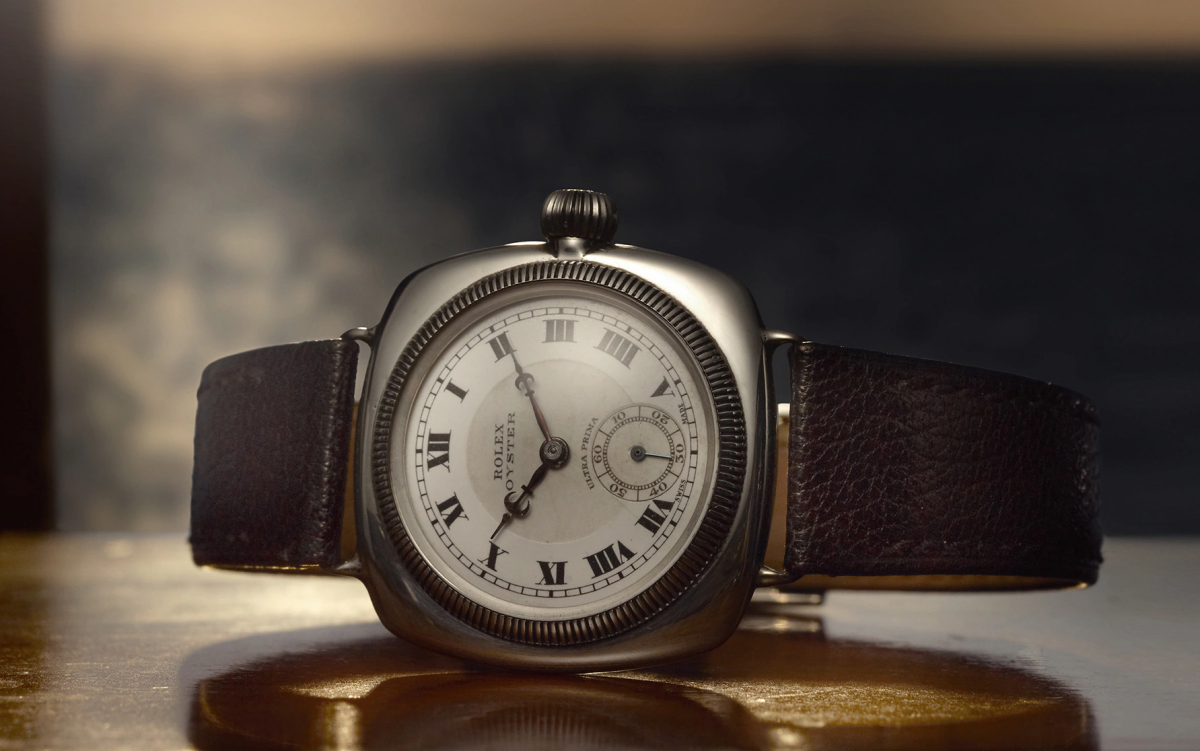
The first waterproof wristwatch invented by Rolex named “Oyster”, 1926 (photo: Rolex)
During the 1920s you’ll find the advent of the automatic movements with their self-winding watches. By 1926, Rolex had already introduced their waterproof Oyster case and by 1931 the Oyster Perpetual waterproof and self-winding Rolex was released.
Automatic watches are a type of watch that uses a rotor to wind the mainspring. The rotor, which is made up of a weight that turns with the movement of your wrist, winds the mainspring when it is moved by your arm. Automatic watches can also be wound manually using an attached crown on top of the case (this is known as ‘hand-winding’).
<>
The Quartz Crisis
By the 1970s the watch market expanded once again to include quartz powered watches that needed no winding. The first of these watches was the Seiko Astron in 1969.
Quartz watch movements quickly fell in price as there were far fewer moving parts and cheaper to make. This caused a crisis for the makers of mechanical and automatic watches as the market was flooded with these much cheaper versions. It was a struggle and many smaller manufacturers disappeared entirely.
By 1970, only 600 of the 1600 watchmaking companies survived. Even immensely successful companies like Rolex struggled and eventually released their own Quartz movements to compete with the market.
<>
The Renaissance of Mechanical Watches
This Quartz crisis lasted for almost two decades before mechanical watches came to the forefront again. Thanks to the luxury watch world, the functionality and craftsmanship maintained the appeal of the mechanically operated wristwatches, and the increased accuracy and new movements helped bring them back to popularity.
<>
The Invention of the Wristwatch: Final Thoughts
The wristwatch is a beautiful invention, and it’s one of those things that we take for granted. If you only look at the history of this object, it’s clear that there was a lot of innovation and creativity behind its development.
Get your piece of history from our vast selection of over 2,500 timepieces at SwissWatchExpo.com.

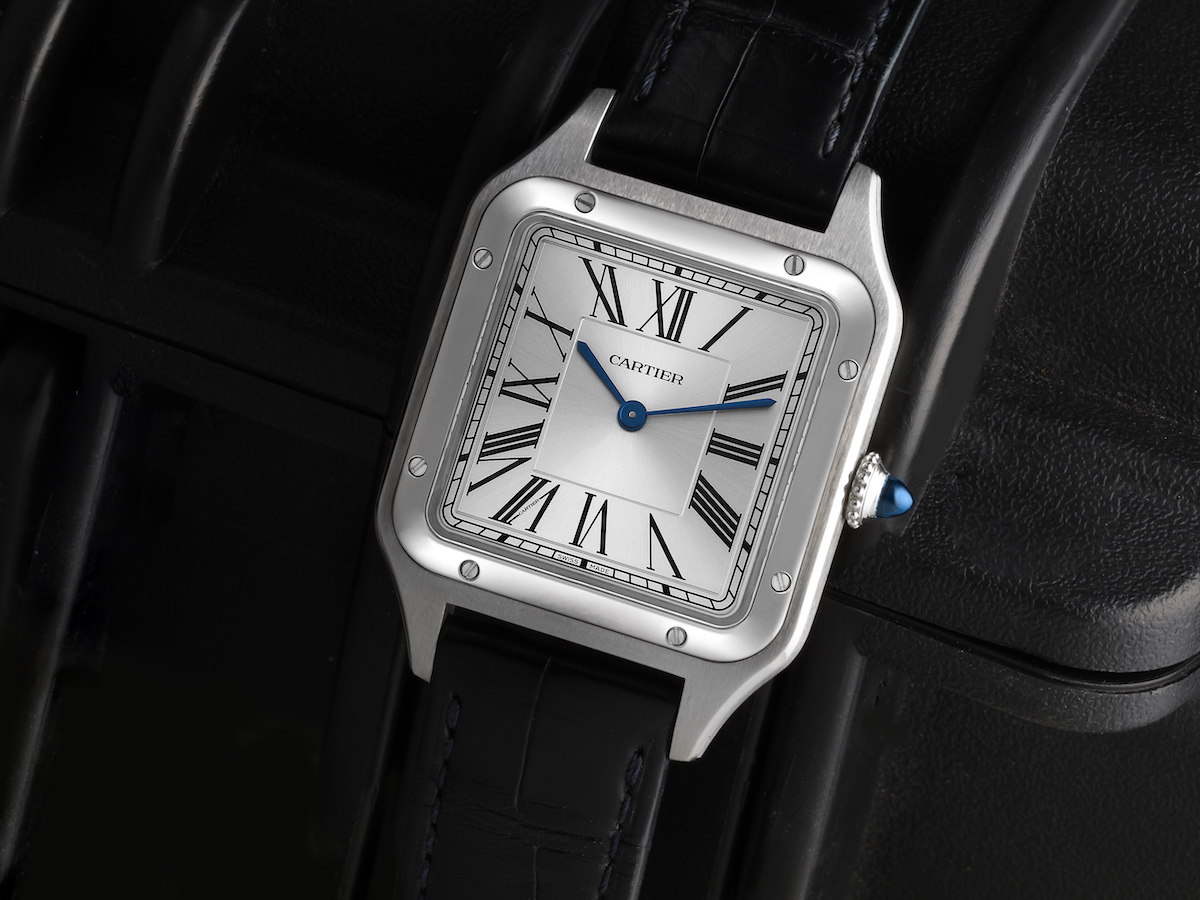
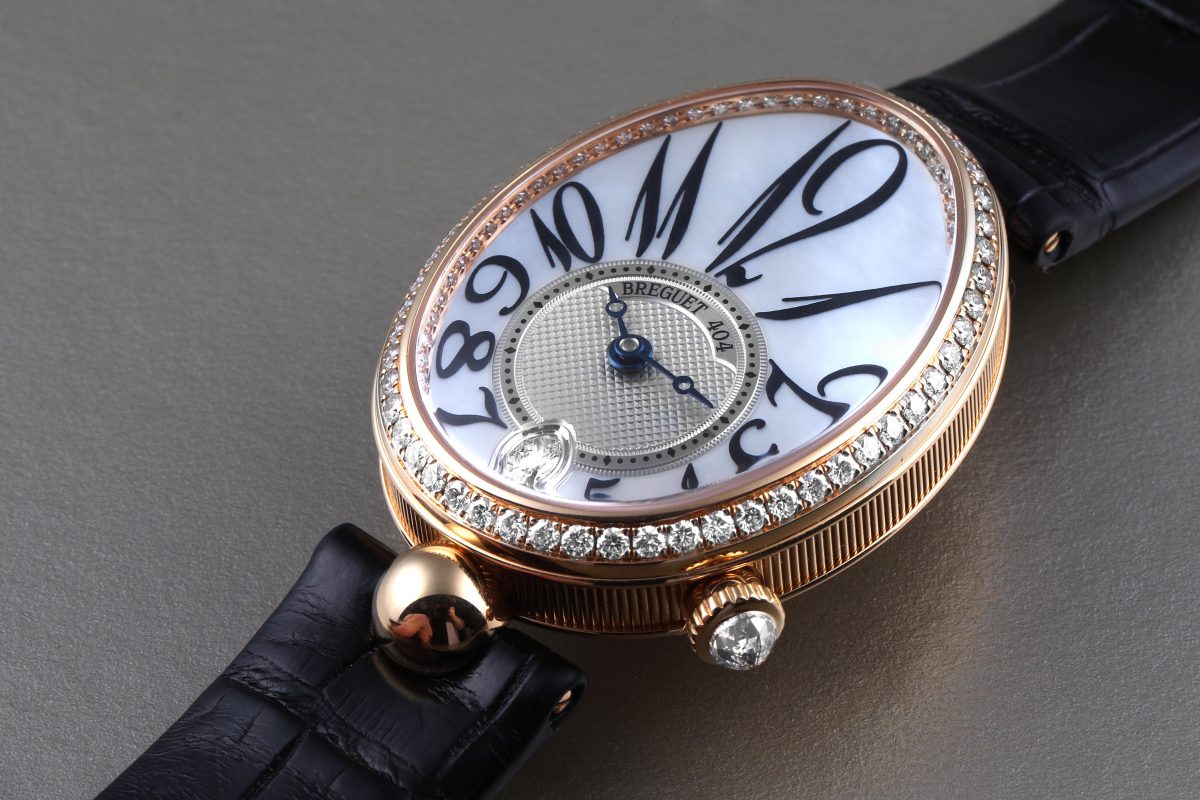 Breguet Reine de Naples watch
Breguet Reine de Naples watch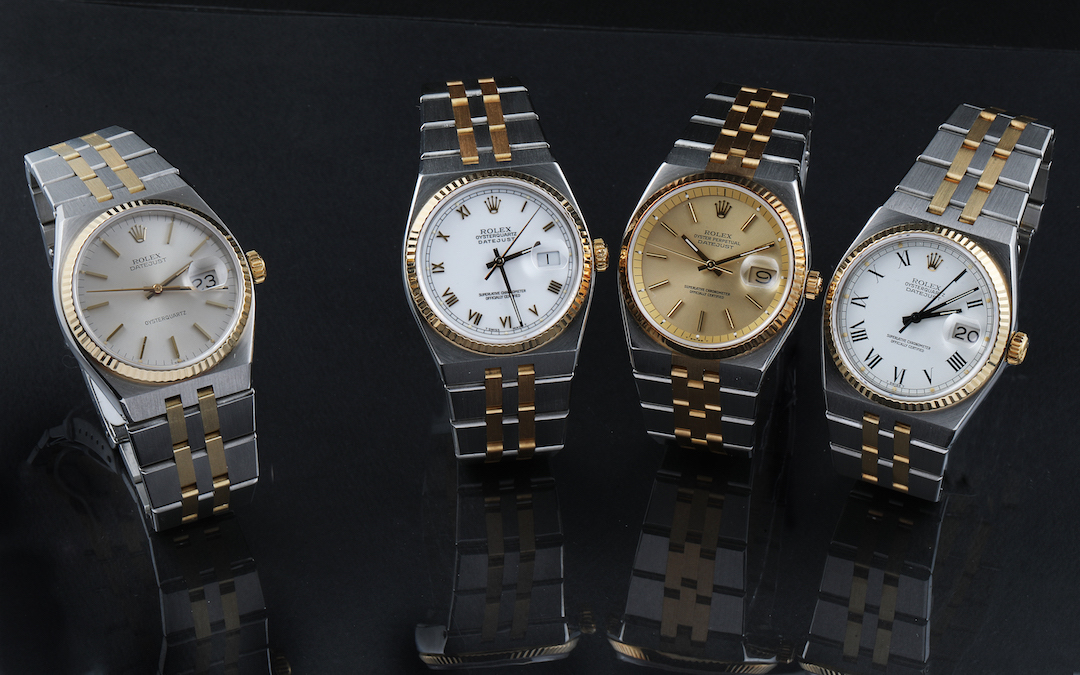 Rolex Oysterquartz
Rolex Oysterquartz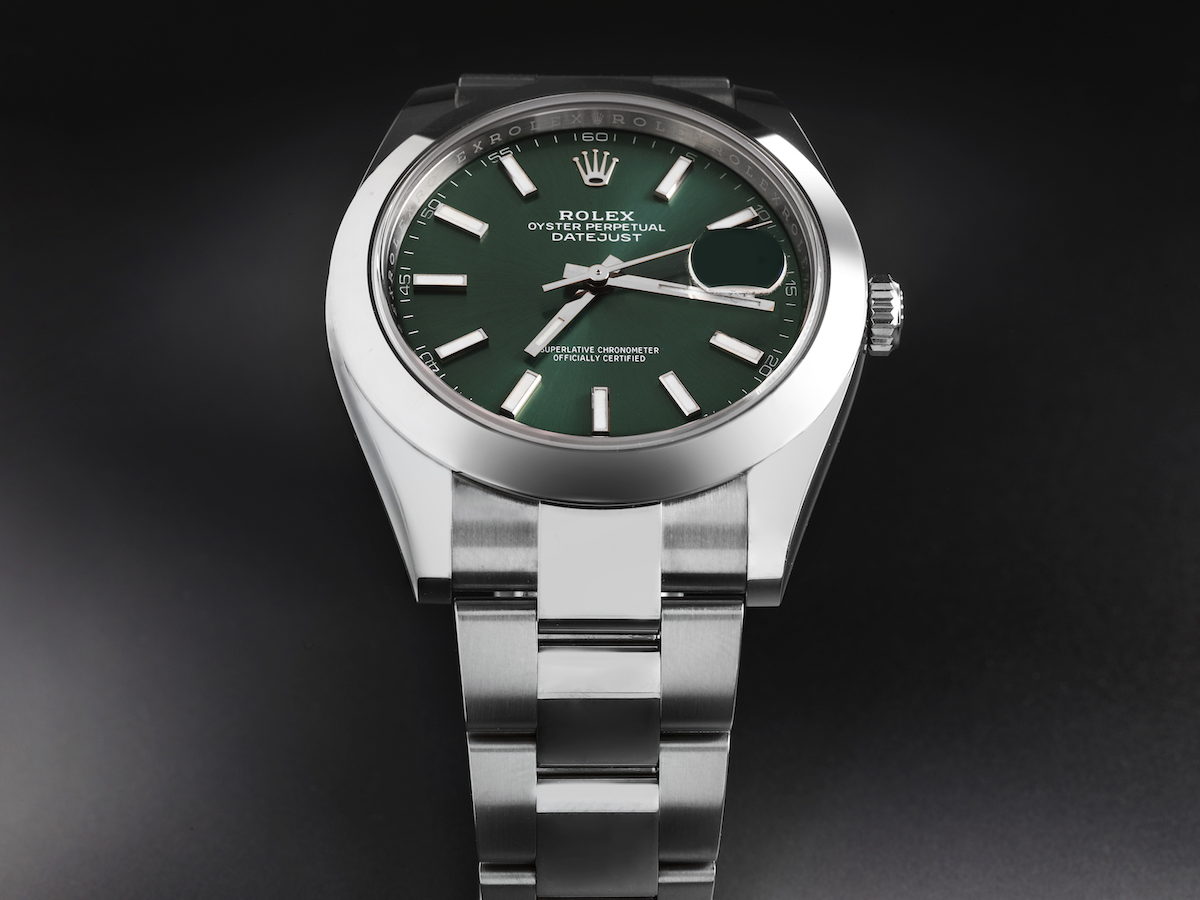 Rolex Datejust 41
Rolex Datejust 41